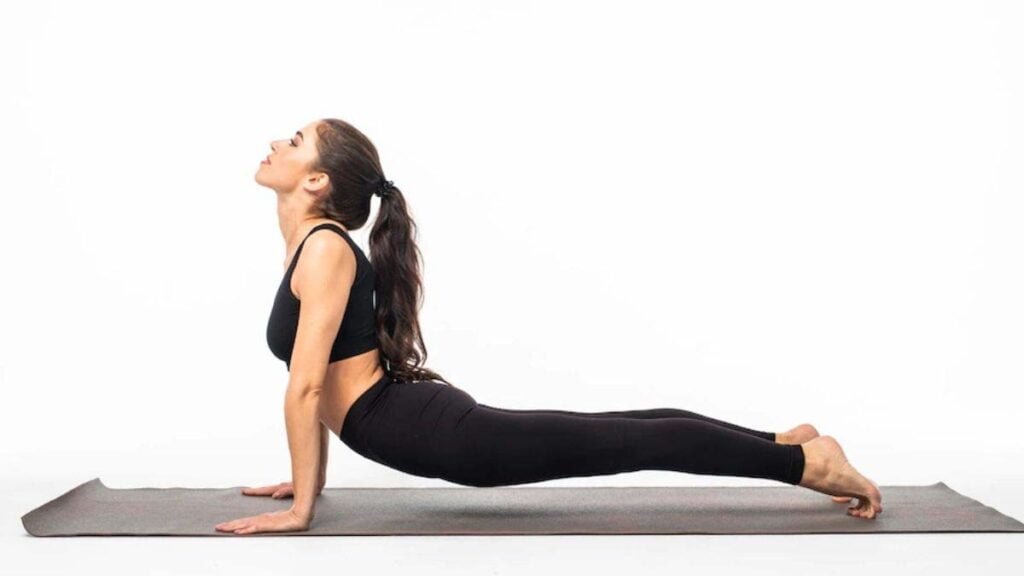Bhujangasana Yoga: Awaken Your Inner Strength and Open Your Heart with Cobra Pose
Table of Contents
ntroduction
Bhujangasana Yoga, or Cobra Pose, is a rejuvenating and heart-opening yoga posture that stimulates the energy centers of the body and promotes strength, flexibility, and a sense of expansion. Derived from the Sanskrit words “bhujanga” (meaning cobra) and “asana” (meaning pose), Bhujangasana imitates the graceful stance of a cobra ready to strike, symbolizing power and transformation.
In this article, we will explore the steps, benefits, variations, and precautions associated with Bhujangasana, guiding you to embrace the awakening and energizing qualities of this empowering backbend.
How to Perform Bhujangasana Yoga
To practice Bhujangasana Yoga, follow these step-by-step instructions:
Step 1: Lie flat on your stomach, with your legs extended behind you and the tops of your feet pressing into the mat.
Step 2: Place your palms on the mat, directly beneath your shoulders, fingers spread wide, and elbows tucked close to your body.
Step 3: Engage your core muscles and press the tops of your feet, thighs, and pubic bone firmly into the mat.
Step 4: Inhale and slowly begin to lift your chest off the mat, straightening your arms and keeping your elbows slightly bent.
Step 5: Roll your shoulders back and down, opening your chest and drawing your shoulder blades together.
Step 6: Gently tilt your head back, lengthening the front of your neck, and gaze forward or slightly upward, avoiding straining your neck.
Step 7: Hold Bhujangasana for a few breaths, maintaining a steady and smooth breath.
Step 8: Exhale and slowly lower your chest back down to the mat, releasing the pose.
Benefits of Bhujangasana Yoga
Regular practice of Bhujangasana offers numerous physical, mental, and energetic benefits, including:
a. Spine Flexibility: Cobra Pose strengthens and stretches the muscles along the spine, improving its flexibility and promoting healthy spinal alignment.
b. Core Strength: The engagement of the abdominal muscles in Bhujangasana helps to develop core strength and stability.
c. Chest and Shoulder Opening: This pose opens the chest and shoulders, counteracting the effects of poor posture and promoting better breathing.
d. Improved Digestion: The gentle compression of the abdomen in Cobra Pose stimulates the digestive organs, enhancing digestion and alleviating constipation.
e. Increased Energy and Vitality: Bhujangasana activates the energy centers of the body, promoting an overall sense of vitality and rejuvenation.
f. Emotional Release: Backbends, such as Cobra Pose, can help release stored tension and emotions, creating a sense of emotional liberation and empowerment.
Variations of Bhujangasana Yoga
Explore these variations of Bhujangasana to modify the pose according to your level of practice and comfort:
a. Baby Cobra Pose: If lifting your chest fully off the mat is challenging, you can start with Baby Cobra by keeping your forearms on the mat, lifting only your chest and keeping your elbows bent.
b. Sphinx Pose: In this variation, lower your forearms to the mat, with your elbows directly beneath your shoulders. Lift your chest while keeping your hips grounded, creating a gentle backbend.
c. Upward Facing Dog Pose: To deepen the backbend, transition from Bhujangasana to Upward Facing Dog Pose by straightening your arms and lifting your thighs and knees off the mat.

Precautions and Contraindications
While Bhujangasana is generally safe for most practitioners, it’s important to consider the following precautions:
a. Avoid practicing Bhujangasana if you have any recent or chronic back injuries, such as herniated discs or sciatica. If you have any concerns, consult with a healthcare professional or a qualified yoga instructor before attempting the pose.
b. Pregnant women should approach Bhujangasana with caution and modify the pose by widening their stance or practicing supported variations to avoid excessive pressure on the abdomen.
c. If you have carpal tunnel syndrome or wrist injuries, you can use yoga props, such as blocks or blankets, to support your palms and alleviate pressure on the wrists during the pose.
Conclusion
Bhujangasana, the Cobra Pose, invites practitioners to awaken their inner strength, flexibility, and expansion. This heart-opening backbend offers a multitude of physical, mental, and energetic benefits, promoting spine flexibility, core strength, and emotional release.
Embrace the grace and power of a cobra as you explore Bhujangasana in your yoga practice. Approach this pose with patience, awareness, and self-compassion. Allow the transformative qualities of Cobra Pose to help you tap into your inner resilience, open your heart, and embrace a sense of empowerment.
With regular practice, Bhujangasana can become a symbol of your personal growth and transformation on and off the mat.




